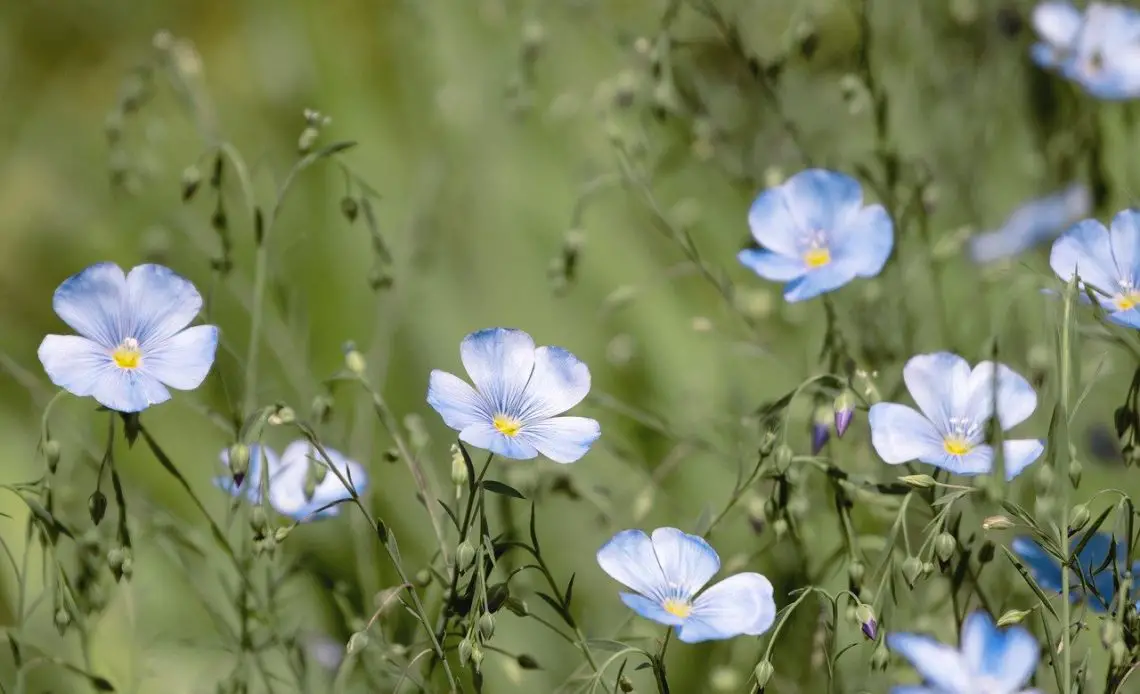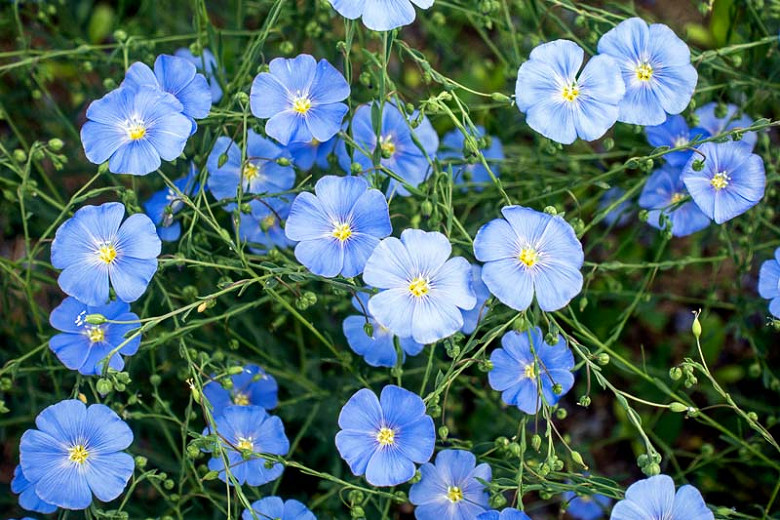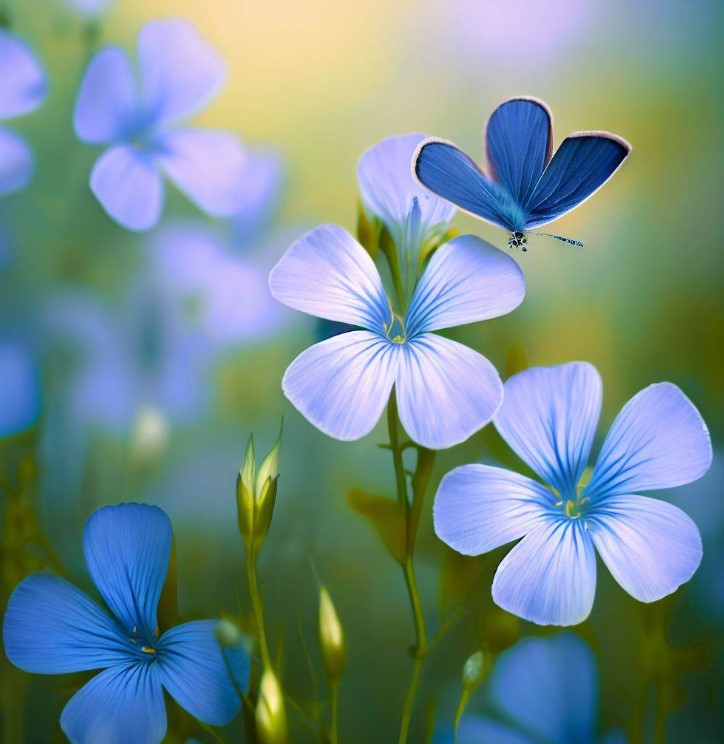The widely recognized flax flower, otherwise known as Linum Usitatissimum or Linseed, is anything but ordinary. This member of the Linaceae family boasts a unique and remarkable presence.

It seems that the flax flower has been grown from the wild plant Linum Bienne or pale flax. This flower is not just a decorative item but has a lot of practical uses. It is highly nutritious, can be used to make textiles, and of course, it has stunning blossoms. Interestingly, the Latin name Usitatissimum translates to ‘most useful’, which perfectly sums up the versatility of this flower.

The flax flower is a striking plant, with bright blue blooms and a tall, airy stem that can grow up to 3 feet in height. Native to Europe and Asia, this flower thrives in well-drained, light soil and is best cultivated in the spring and summer. Interestingly, the oldest evidence of humans using this flower can be traced back to present-day Georgia, where textiles made from flax fibers were found in a cave dating back to 30,000 years ago.
There are two types of flax plants – perennial and annual – and while both have a similar oil yield in terms of quantity and quality, annuals release seeds 2-3 times more than perennials. Perennials are typically grown for ornamental purposes, while annuals are cultivated for commercial use to produce flax seed and fiber.
In terms of symbolism, the flax flower represents domestication and purity. This is due in part to a Victorian folktale about a poor farmer who was granted a wish by the Goddess Bertha, and chose to receive a bag of flax seeds instead of jewels or gold. The seeds needed to be spun into fabric, which has traditionally been associated with domestic settings and women’s work.
Flax flowers come in a range of colors, with blue blooms representing wisdom, freedom, growth, devotion, commitment, and maturity, while lavender and pink-leaning flowers symbolize joy, youth, delicateness, beauty, good health, and good luck.
Flax is a versatile plant, with every part of it being useful. The fabric made from its stem, linen, is naturally antibacterial and high in Omega-3 fatty acids, while the seeds are nutritious and may help prevent certain forms of cancer. The oil extracted from the seeds is one of the oldest known commercial oils and has a calming effect on people, helping with depression and anxiety. The plant roots can be used to make an infusion that strengthens eyesight, and the fiber from its stem can be used to make paper, baskets, mats, strings, nets, and more.
To grow flax flowers, plant them in light, well-drained soil in a sheltered, sunny area. Water the plants as they establish and apply a water-soluble fertilizer every two weeks before the seed capsules form. With the right conditions, flax flowers can thrive and provide a range of benefits.

If you want to take care of your Flax flowers, make sure to keep the soil moist without overwatering and use mulch to prevent weeds. Pruning the plants can also help with air circulation and cutting them halfway after blooming is recommended. When it comes to giving Flax flowers as a gift, they are often associated with purity and domestication, making them a great option for newlyweds or as a unique addition to any bouquet. But really, they can be gifted on any occasion to add a pop of blue to the arrangement.

The vibrant blue hue of flax flowers creates a beautiful and dense backdrop in gardens and meadows. Their carpet-like growth can be imitated by planting them in large drifts, which gives the impression that the sky has descended upon the garden. These flowers are perfect for the front of perennial borders, rock gardens, meadows, cottage garden settings, and curbsides. To learn more about flowers, visit PansyMaiden, where you can find enjoyable and informative content about these lovely plants.
